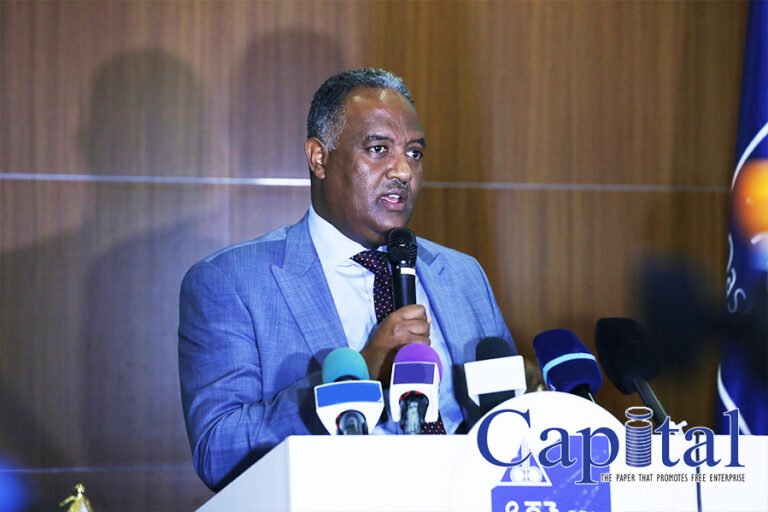Dashen Bank announced it has extended its strategic partnership with CR2 as they accelerate their Branch Transformation programme, a key pillar of their overall digital transformation taking place at the bank.
This latest strategic initiative responds to the changing nature of the branch, migrating traditional teller services to digital points of access such as mobile, online and in-branch self-service terminals including the ATM and kiosk. Transitioning to a digital branch enables tellers and relationship managers to assist customers digitally in-branch or remotely via the self-service channels and allows customers avail of the services unassisted from the digital points of access. Services include account opening, card applications, cheque deposits, inward and outward remittances and instant loans.
Branch Transformation marks the second major initiative that Dashen Bank has embarked upon with CR2. Following the rollout of CR2’s Digital Banking and Payments Platform; BankWorld, in 2018, the platform has provided an omnichannel banking experience for both Dashen digital banking customers and the 3.5 million of Ethiopians who use Dashen’s ‘Amole’ Digital Wallet on a daily basis that is unique in the Ethiopian market today.
Asfaw Alemu, Chief Executive Officer of Dashen Bank said “apart from creating better digital customer experiences, our partnership with CR2 will drive further growth of our overall market share, enabling us to reach new customers and reduce our cost to serve. We expect to see growth across all lines of business including retail, corporate and Islamic banking segments as well as increasing access to foreign currency through inward remittances and improving our overall cost to income ratio.”
Chief Executive of CR2, Fintan Byrne also said “we are very pleased to further solidify our partnership with Dashen Bank. Branch Transformation is a critical strategic project for any bank to undertake, but it offers significant benefits when successfully executed. Digitising and streamlining processes that were traditionally served in-branch will greatly increase the Bank’s digitalcustomer base and significantly improve overall cost efficiencies at the bank.”
Dashen Bank accelerate digital branch transformation with CR2 Partnership
The issue of attention economy
Work life has changed radically over the past few decades. We used to have working conditions in which our attention could more easily focus on the task at hand. We now experience distractions and information overload all the time. Our cell phones, tablets, e-mails, texts, and the like place continual demands on our attention. According to Tom Davenport, the former Director of the Accenture Institute of Strategic Change and coauthor of the book “The Attention Economy: Understanding the New Currency of Business”, “Understanding and managing attention is now the single most important determinant of business success.” We are living in an “attention economy” in which the ability to manage our attention and the quality of our attention is key to our success as leaders.
But in the current reality, where our ability to pay attention at will is under siege, we have a problem. The question is how big is this problem? Researchers studying the mind’s natural tendency to wander calculated that on average our mind wanders 46.9 percent of the time. In other words, while we are at work, 53.1 percent of the time our mind is on task. The rest of the time, it’s off task. From a leadership perspective there is a lot of potential to be developed here. Even just a small increase in “on-task” time could have a significant improvement in many aspects of leadership, including productivity, leadership effectiveness, employee satisfaction, teamwork, and anything else that would benefit from more focused attention.
Attention wandering is a natural neurological tendency. But in the Harvard Business Review article, “Overloaded Circuits: Why Smart People Under perform,” researcher Edward Hallowell outlines the fact that attention wandering has increased drastically over the past few decades because of the challenges of the reality. Specifically, he concluded that “modern office life and an increasingly common condition called attention deficit trait are turning steady executives into frenzied underachievers.” Attention is indeed a new variable of economy in business and certainly in leadership.
McKinsey outlines in the McKinsey Quarterly article “Recovering from Information Overload,” that “attention fragmentation hit CEOs and their colleagues in the C-suite particularly hard because senior executives so badly need to synthesise information from many different sources, reflect on its implications for the organization, apply judgment, make trade-offs, and arrive at good decisions”.
Traditionally, business productivity has been enhanced through time management, goal setting, prioritization skills, and general qualifications. Attention, in the reality, is becoming a new foundational skill of leadership and business performance. But the big question is whether we as leaders, facing the reality, are destined to experience attention wandering with resulting underperformance? Are we destined to have minds that often wander and lose focus? Thankfully, according to Edward Hallowell, the answer is no. Attention can be trained and strengthened. It’s much like a muscle. We can enhance our attentiveness to the task at hand or people we are leading.
Researchers on the field seriously recommend that mindfulness is the method. And make no mistake, mindfulness is no touchy-feely, New Age concept. Based on thousands of years of development, mindfulness is a rigorous practice of enhancing focus and clarity of mind while opening the eyes to the potential in ourselves and the world. It is a practice of mental high performance, and in many ways a long-awaited answer to the challenges of today’s fast-paced and information-overloaded leadership reality. Decades of research shows that our brains are changeable. It’s called “neuroplasticity”.
In short, the way we use our brain is the way we reshape it. According to research studies, any action we do or thought we think is creating neural pathways in our brain and becomes easier to repeat. The brain is changing according to how we use it. This means we are not predefined by what we are now, but rather we are recreating ourselves by what we do now. This means that every moment we spend with a focused and clear mind, focus and clarity become traits of our brain. In the context of the attention economy, this means we are not destined to have a wandering mind. We can train ourselves and gain high levels of attention, focus, and clarity of mind and thereby become better leaders of our own lives, business and the people.
Mindfulness involves entering the attention economy and being able to manage our wandering mind and external distractions. But the practice has an impressive list of research proven by-products including stronger immune system, lower blood pressure, reduced stress, better sleep, improved cognitive function, enhanced focus and awareness, increased job satisfaction, better work−life balance, enhanced creativity, and better overall quality of life. Realizing benefits from mindfulness requires formal training that can be viewed as going to the gym for the mind.
Many of the approaches to mindfulness training includes helping individuals enhance focus and awareness – critical skills for today’s leaders. Focus is about training the mind to maintain sharp focus on a particular task, with minimal distraction, for a long as we want, with minimal effort. Awareness is about training the mind to be open and see clearly what is happening internally and externally and make wise choices about where to focus your attention.
Sharp focus is the opposite of being distracted. And the opposite of open awareness is to be on autopilot, not having awareness of where we direct our focus. These mind states can be combined into a matrix. According to Edward Hallowell, our state of mind can be described as being absorbed. It often happens spontaneously when we do routine tasks or run, swim, or do other monotonous activities. The risk of the absorbed state is that we lack awareness. In leadership, lack of awareness can mean the difference between picking up on an employee’s stress signals and pushing too far.
There can be benefits to loosening focus and allowing random thoughts to bubble up. Some people find that they come up with more creative ideas. But if our mind is too distracted, we’ll have difficulty retaining any good ideas. Good ideas only become innovative solutions when we have the focus to retain and execute them. Sharp focus and open awareness are beneficial skills for anyone at any level of an organization, but they are particularly important for leadership. In many people,s view, mindfulness is a foundational skill for effective leadership.
Mindfulness is about developing high levels of self-management by switching off the autopilot and getting in the driver’s seat of our life. Mindfulness also cultivates the ability to be more aware of others, which is a cornerstone for leading people and leading an organization. Peter Drucker said that we can’t manage others unless we learn to manage ourselves first.






